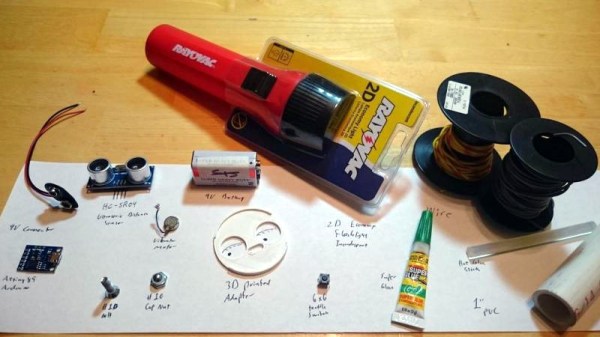Sometimes hackers and makers hack and make stuff just because they can. Why spend hours in a CAD program designing a gazillion gears, brackets and struts? Why cut them all out on a homemade CNC? Why use a PIC and perf board to control everything? Because we can. Well, because [Est] can, rather. He put together this RC controlled beast of a toy with multiple legs and crushing claws.
It’s made out of 6 mm acrylic and threaded rod. The legs are controlled by two DC motors, while the mouth uses two geared steppers. The beast talks to the controller via a pair of 433 MHz transceivers using a protocol similar to how an IR remote talks to a television. A handful of LEDs lights up the clear acrylic, making it look extra scary.
This design is, of course, based on the Strandbeest concept from [Theo Jansen]. It’s a great robotics project because your project doesn’t suffer under its own weight. It’s more like a tracked machine. In fact, we saw a huge rideable version made of metal at BAMF this year. That’s one you just can’t miss!












